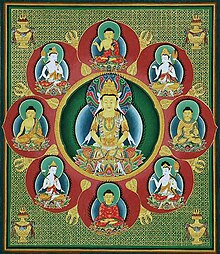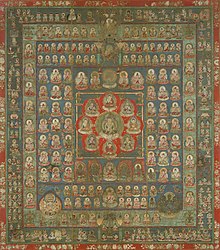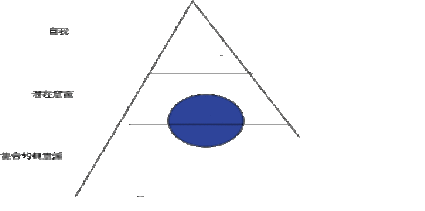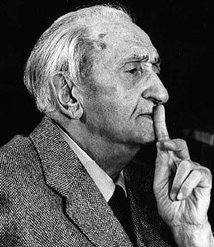「それは、ちょうど、ユュナツミルクがクラッチのように働き、成長という、から廻りしていた細胞のエンジンに、ギヤがはいったようであった…」
成長をうながす他の物質について、各種の実験が終わってから、研究は第二の段階へはいった。百におよぶニンジンの外植体"(個体からその一部を分離し、体外で培養して得た個体)が、たったひとつの容器のなかで、培されたのである。これらの細胞はそれぞれ違った経過をたどる。非常に大きくなるのもある。順次、分裂して、フィラメント状になるのもある。
酵母菌のように芽を出すものもある。さらにあるものはーーそしてこれがこの話の要点だ細胞塊となり、根を出しはじめる。固体培地へ移してやると、緑の芽をかき出す。ふたび土壌へ移して培義してやると、普通の根と茎と花と種子のあるニンジンになった!
今から亡の年前に、オーストリアの生物学者G・ハーバーランドは、このような、栄養生殖《結性生源)が、いっか実現することを夢みていた。その夢を、スチュワードは現実のものにしたのである。その後の実験から、ニンジンの初期の歴のひとつからとり出した細胞のほとんどどれでも、先に述べたように、無性的に個体にまで成長させることができることが実証された。
スチュワードが難関を突破して以来、べつの研究者たちはタバコについて同様な実験に成功した。
これは,ニンジンの場合とはまた少し違った培養の操作手順を苦心して見出さねばならなか
った。それぞれの植物により、その培養条件は違っているもののようである。これと同じことが、まもなくほかのどんた植物でも成功すると考えられている。
ところで、
間習は、これと同じことが動物細胞についてもできるかどうかということである。
その答は、決して不可能なことではない、というものである。
もちろん、それは容易なものではない。
大体、実験室で細胞を培養することは、けっして新しい技術ではない。けれども、たった一個の細胞をもとに、これを薄層の組織にまで成長させる方法が発見されたのは、つい十数年まえのことである。普通は、たった一個の細胞では、栄養培地中におかれても分裂できない。故ウィルトン・アールが、ある方法を発見してこれに成功した。が、これらの培養細胞は、分裂増殖して大きくはなっても、器官などの構造体を形成する気配をほとんど示さない。器官の形成は、多分、隣りにある別の組織から出てくる化学物質によるものだと思われている。ある程度の見当はついており、現在、その点の究明に研究がすすめられつつある。正直いって、まだ、細胞培養と察官の開には、橋がかけられていないというのが実状である。
"It was just like Yunatsu Milk acting like a clutch and gearing into the engine of the cells that were spinning from the point of growth ..."
After various experiments on other growth-promoting substances, research went into the second phase. Hundreds of carrot explants "(individuals obtained by separating a portion of an individual and culturing it in vitro) were cultivated in a single container. These cells are different. It can be very large, and it can be split into filaments in sequence.
Some sprout like yeast. What's more-and this is the point of this story, the cell mass that begins to take root. When transferred to a solid medium, green sprouts are scraped out. When I moved it to the soil again and cultivated it, it became a carrot with ordinary roots, stems, flowers and seeds!
A year before his death, Austrian biologist G. Harborland dreamed of achieving such vegetative reproduction. Steward made that dream a reality. Subsequent experiments demonstrated that almost any cell from one of the early history of carrots, as mentioned earlier, can grow asexually into an individual.
Since Steward broke through the obstacles, other researchers have succeeded in similar experiments on tobacco.
This has to be painstakingly found with a slightly different culture procedure than for carrots.
It was. It seems that the culture conditions are different for each plant. It is believed that the same thing will soon succeed in any other plant.
by the way,
The practice is whether the same can be done for animal cells.
The answer is that it's not impossible.
Of course, it's not easy.
In general, culturing cells in the laboratory is by no means a new technique. However, it was only a dozen years ago that a method was discovered to grow a single cell into a thin layer of tissue. Normally, a single cell cannot divide even when placed in a nutrient medium. The late Wilton Earl discovered a method and succeeded in doing so. However, these cultured cells show little sign of forming structures such as organs, even if they divide and proliferate and grow larger. The formation of organs is probably due to chemicals coming from another tissue next door. I have some idea, and research is currently underway to investigate this point. To be honest, the reality is that there is still no bridge between cell culture and the opening of the inspector.
成長をうながす他の物質について、各種の実験が終わってから、研究は第二の段階へはいった。百におよぶニンジンの外植体"(個体からその一部を分離し、体外で培養して得た個体)が、たったひとつの容器のなかで、培されたのである。これらの細胞はそれぞれ違った経過をたどる。非常に大きくなるのもある。順次、分裂して、フィラメント状になるのもある。
酵母菌のように芽を出すものもある。さらにあるものはーーそしてこれがこの話の要点だ細胞塊となり、根を出しはじめる。固体培地へ移してやると、緑の芽をかき出す。ふたび土壌へ移して培義してやると、普通の根と茎と花と種子のあるニンジンになった!
今から亡の年前に、オーストリアの生物学者G・ハーバーランドは、このような、栄養生殖《結性生源)が、いっか実現することを夢みていた。その夢を、スチュワードは現実のものにしたのである。その後の実験から、ニンジンの初期の歴のひとつからとり出した細胞のほとんどどれでも、先に述べたように、無性的に個体にまで成長させることができることが実証された。
スチュワードが難関を突破して以来、べつの研究者たちはタバコについて同様な実験に成功した。
これは,ニンジンの場合とはまた少し違った培養の操作手順を苦心して見出さねばならなか
った。それぞれの植物により、その培養条件は違っているもののようである。これと同じことが、まもなくほかのどんた植物でも成功すると考えられている。
ところで、
間習は、これと同じことが動物細胞についてもできるかどうかということである。
その答は、決して不可能なことではない、というものである。
もちろん、それは容易なものではない。
大体、実験室で細胞を培養することは、けっして新しい技術ではない。けれども、たった一個の細胞をもとに、これを薄層の組織にまで成長させる方法が発見されたのは、つい十数年まえのことである。普通は、たった一個の細胞では、栄養培地中におかれても分裂できない。故ウィルトン・アールが、ある方法を発見してこれに成功した。が、これらの培養細胞は、分裂増殖して大きくはなっても、器官などの構造体を形成する気配をほとんど示さない。器官の形成は、多分、隣りにある別の組織から出てくる化学物質によるものだと思われている。ある程度の見当はついており、現在、その点の究明に研究がすすめられつつある。正直いって、まだ、細胞培養と察官の開には、橋がかけられていないというのが実状である。
"It was just like Yunatsu Milk acting like a clutch and gearing into the engine of the cells that were spinning from the point of growth ..."
After various experiments on other growth-promoting substances, research went into the second phase. Hundreds of carrot explants "(individuals obtained by separating a portion of an individual and culturing it in vitro) were cultivated in a single container. These cells are different. It can be very large, and it can be split into filaments in sequence.
Some sprout like yeast. What's more-and this is the point of this story, the cell mass that begins to take root. When transferred to a solid medium, green sprouts are scraped out. When I moved it to the soil again and cultivated it, it became a carrot with ordinary roots, stems, flowers and seeds!
A year before his death, Austrian biologist G. Harborland dreamed of achieving such vegetative reproduction. Steward made that dream a reality. Subsequent experiments demonstrated that almost any cell from one of the early history of carrots, as mentioned earlier, can grow asexually into an individual.
Since Steward broke through the obstacles, other researchers have succeeded in similar experiments on tobacco.
This has to be painstakingly found with a slightly different culture procedure than for carrots.
It was. It seems that the culture conditions are different for each plant. It is believed that the same thing will soon succeed in any other plant.
by the way,
The practice is whether the same can be done for animal cells.
The answer is that it's not impossible.
Of course, it's not easy.
In general, culturing cells in the laboratory is by no means a new technique. However, it was only a dozen years ago that a method was discovered to grow a single cell into a thin layer of tissue. Normally, a single cell cannot divide even when placed in a nutrient medium. The late Wilton Earl discovered a method and succeeded in doing so. However, these cultured cells show little sign of forming structures such as organs, even if they divide and proliferate and grow larger. The formation of organs is probably due to chemicals coming from another tissue next door. I have some idea, and research is currently underway to investigate this point. To be honest, the reality is that there is still no bridge between cell culture and the opening of the inspector.




















 ;
;















